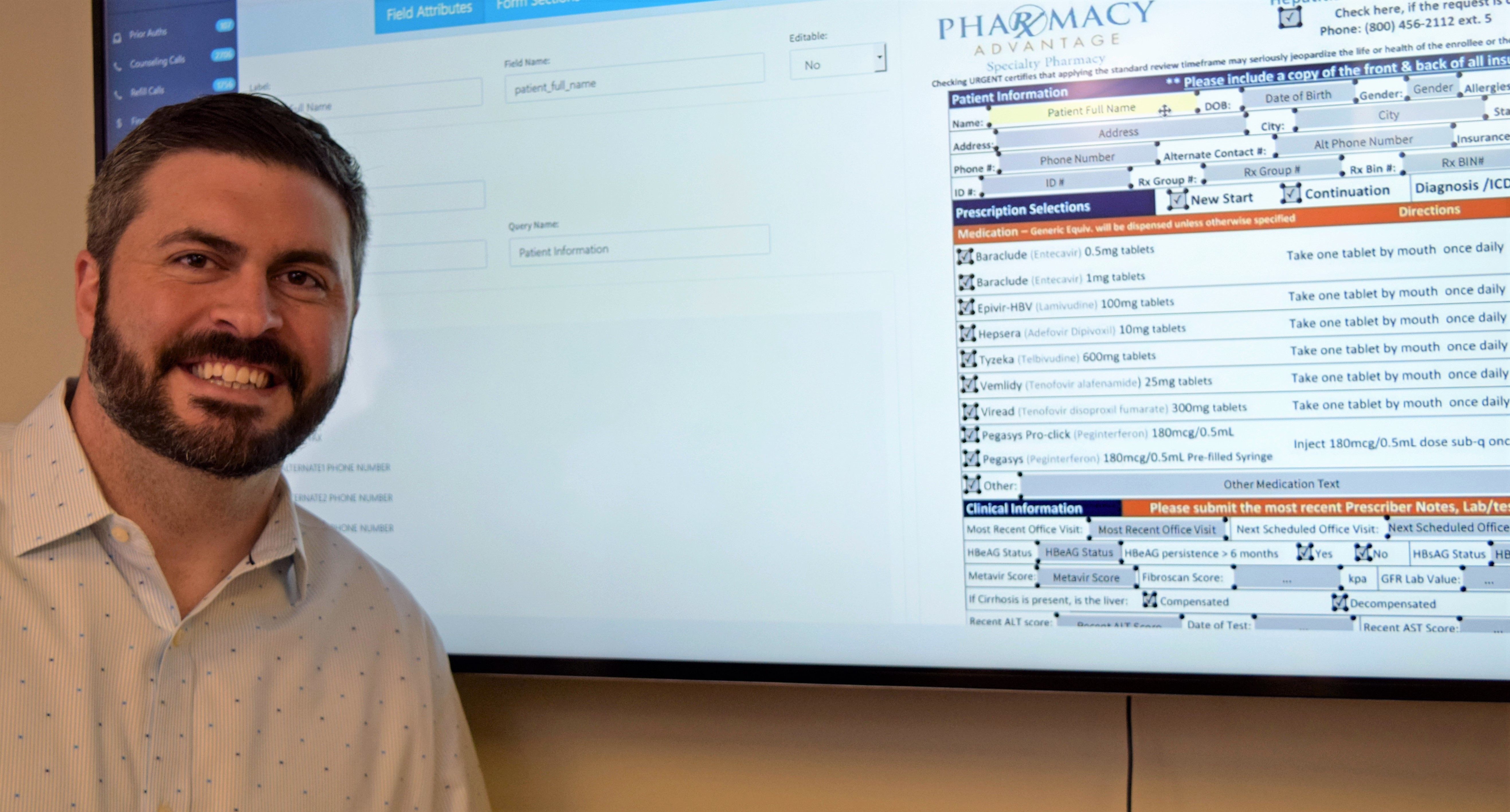How the DromosPTM team simplified the prior authorization and billing process.
In 2011, when Pharmacy Advantage offered Brad Hall the opportunity to co-develop a software system for streamlining its operation at every level, he had only a basic knowledge of the work specialty pharmacies do every day — and virtually no experience in dealing with insurance companies. “When I look at where we started, and how far we’ve come since then, it’s been an incredible journey,” says the co-owner of Detroit’s Infinite Web Design.
“The process of understanding their processes was our first significant challenge. What we learned fairly early-on was that there was an extraordinary amount of repetitiveness in pharmacists’ daily tasks — particularly in dealing with insurance companies. Between patient data, prescribing physician input and dispensing information, the amount of paperwork involved in preparing Medication Request Forms (MRFs) alone was staggering. Each of these forms typically had to be printed, filled-out by hand, then faxed to the insurance company — where it likely ended-up in a large pile with all the other incoming faxes.
“At best, a pharmacist would be able to type information into an editable PDF — but even then, completed forms would have to be printed and faxed to insurance companies. And since there wasn’t a relevant database they could access, they had to start every MRF from scratch. Which not only meant a lot of rote data input, it also meant there was a high chance of input error in preparing those documents. Worse still, it meant pharmacists and clinicians were spending inordinate amounts of time on administrative work — instead of focusing on patient treatment and counseling; which, of course, is what a specialty pharmacy is supposed to be all about.
“What’s more,” Brad continues, “it didn’t take long to realize that every insurance company has its own specific way of doing things — and it’s the pharmacy’s job to work with them, not vice-versa.” So how did Brad’s team (which includes his brother and partner Kevin) set-out to solve the problem? “You can’t ask the insurance companies to change their systems, so we adapted our system. We started with a list of all the companies approved by Pharmacy Advantage’s affiliated health system (Detroit, Michigan’s Henry Ford). It’s only a handful of companies, but between those companies, there are 47 separate forms Pharmacy Advantage has to deal with — and each form has dozens of entries to fill-out.
“Once we had all that information in hand, we built electronic versions of all those forms. Then we integrated those forms with all the relevant data Pharmacy Advantage had been collecting for several years (in a Microsoft Access database) — so that, when a pharmacist created a new MRF, the form would auto-populate itself with all relevant data from an insurance company and the prescribing physician.
“The next giant step forward came when we integrated the system with McKesson’s EnterpriseRx — which means it now automatically pulls-in all relevant drug-dispensing data. But the most significant recent advancement we’ve made is the Dynamic Form Builder. Which means that anyone at Pharmacy Advantage with Admin privileges can modify the forms they use whenever they want — without involving anyone in the IT department. Or us, the programmers.
“And the reason this particular feature is so important is, we’ve prepared DromosPTM to be infinitely adaptable to change. And if there’s one thing we’ve learned since 2011 — particularly in the year and a half since we launched the Dynamic Form Builder — is that change keeps coming faster and faster.
Needless to say, DromosPTM has had a huge impact on the time required to generate prior authorization. “Now, a pharmacist or clinician can easily fill-out a typical MRF in under five minutes. More importantly, they have so much more time to focus on their patients — and what’s best for them.”
“Sure, we take a lot of pride in the great things we’ve accomplished with Pharmacy Advantage over the last seven years, but the thing we take most pride in is the knowledge that the system we’ve built is better equipped than ever for the challenges of the future.”
